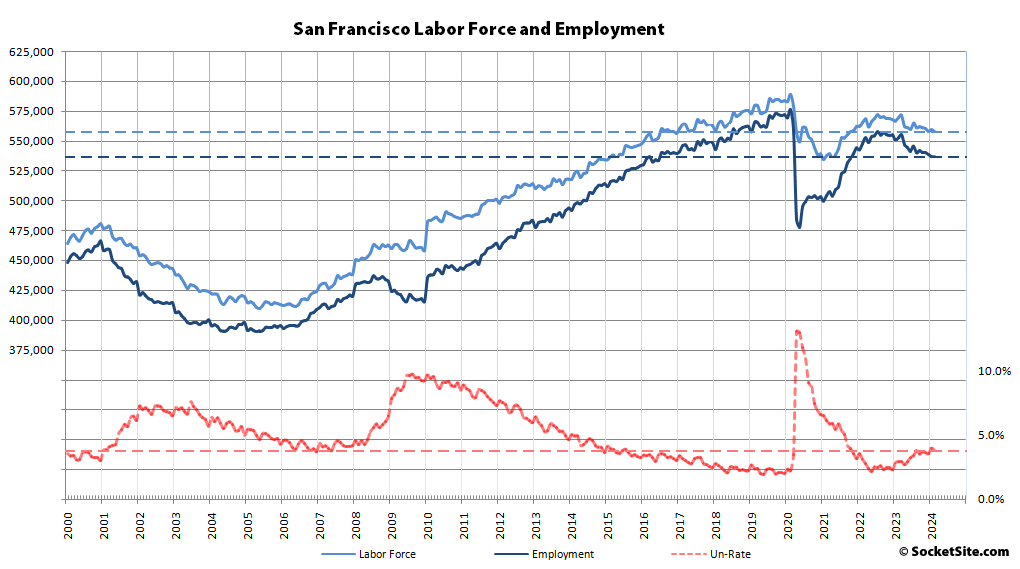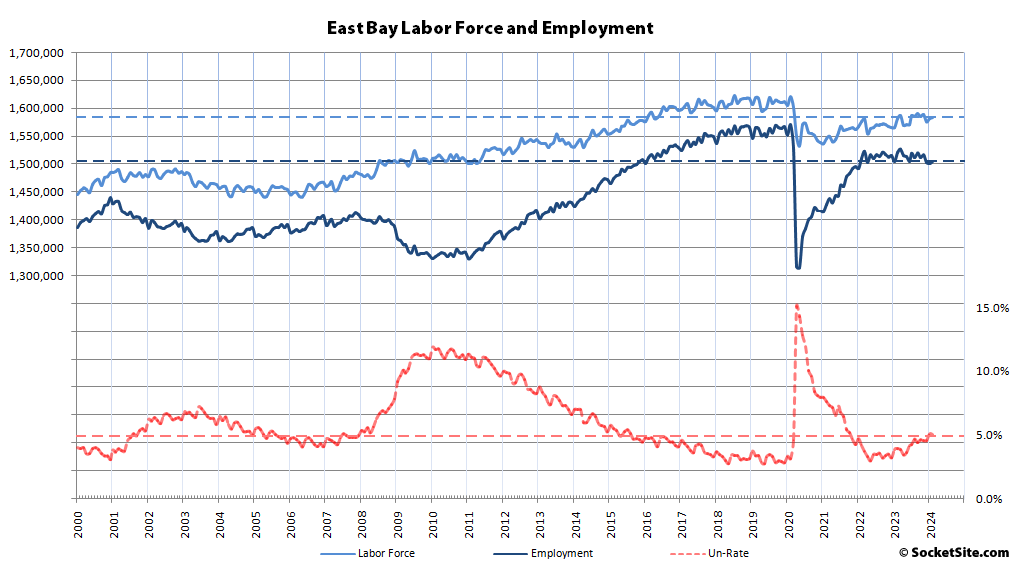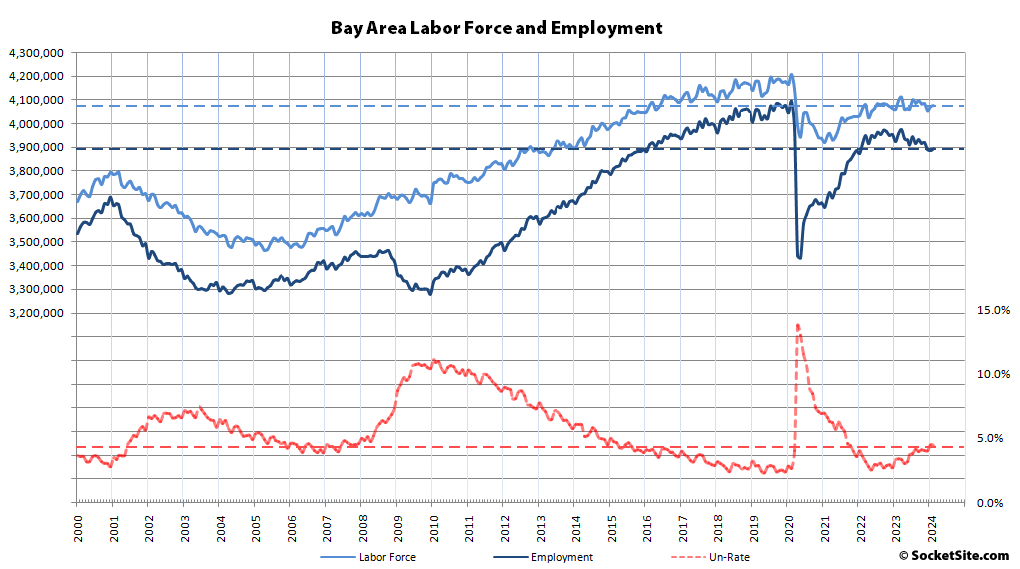While the net number of San Francisco residents with a job was unchanged from January to February, there were over 16,000 fewer employed residents than at the same time last year, versus 14,000 fewer on a year-over-year basis in January, as employment usually ticks up in February.
As such, there nearly 40,000 fewer employed residents in San Francisco than there were in February of 2020, prior to the pandemic really having hit, and over 30,000 fewer people in the local labor force (558,100), all despite “an unemployment rate of just 3.8 percent” and the “AI Boom!”
At the same time, while the number of employed East Bay residents inched up by 2,300 in February to a downwardly revised 1,503,500, there were 16,000 fewer employed East Bay residents than there were at the same time last year and 67,000 fewer employed residents than there were prior to the pandemic, with 37,000 fewer people in the East Bay labor force (1,583,600) and an upwardly revised unemployment rate of 5.1 percent, which is the highest unemployment rate since late 2021.
The number of employed residents spread across San Mateo and Santa Clara Counties was effectively unchanged (-200) from January to February but down by 35,000 on a year-over-year basis to 1,415,200, with nearly 76,000 fewer employed people in Silicon Valley than there were prior to the pandemic and over 50,000 fewer people in the local labor force (1,476,200) for an unemployment rate of 4.1 percent.
Bucking the local trend, net employment across Marin, Napa and Sonoma counties actually increased by 3,800 in February to 437,000 and was effectively even (+800) on a year-over-year basis but still down by 20,000 versus prior to the pandemic, with 13,000 fewer people in the combined labor force (456,600) for an unemployment rate of 4.3 percent.
And as such, while the net number of Bay Area residents with a job inched up by 5,900 in February to a downwardly revised 3,892,400, there were over 67,000 fewer employed residents than at the same time last year, representing the largest year-over-year drop in three years and the tenth straight month with a year-over-year decline, with over 200,000 fewer employed residents than there were prior to the pandemic, over 130,000 fewer people in the labor force and local employment nearly back to 2015 levels and trending down, none of which should catch any plugged-in readers by surprise and all of which is directly related to the demand and market for local real estate.



Can somebody tell that to The Chronicle?
I’ll bet $5 (or my name ain’t Shohei) that the Chron will report it, next week, quoting real estate agents that “employment bottomed several years ago,” and noting that inbound recruits to AI (whose products will nevertheless replace more office-based information workers than are hired for AI) are spilling out of Mission boba joints high on tapioca balls, and that you better buy a tanking condo now before the spring buying season heats up.
Yes quite similar to the billionaire-savior story being spun there, alas any real estate transactions have yet to be made … was that an attempt to cause a ‘run’ on the market or rather pushing a switch in value sentiment?
Everyone: save your Abe(s)
From the SFBT, which has never met a rainbow it could pass up: Office vacancy hit 36.6% in the first quarter of this year, per preliminary data, but demand from prospective office tenants is also rising.(emphasis added)
Off course it is!! Rising at a linear rate, while vacancies go up exponentially
As we outlined two months ago, while gross leasing activity for office space in San Francisco has increased, “said activity [has been] driven by renewals versus new demand and the estimated active demand for office space in San Francisco dropped by over 5 percent to a total of 5 million square feet [at the end of last year], compared to over 7 million square feet of active demand in the market prior to the pandemic, at which point there was over 85 percent less vacant space as today. In other words, there’s nearly 6x more supply than demand.”
Those jobs are never coming back. But if San Francisco & California turn business friendly again then there might be hope in [the form of] fleeing European elites finding new shores, hopefully some of them land here.
You didn’t specify what constitutes “business friendly’ and I don’t subscribe to The Chron, so I don’t know what “those jobs” refers to, but we always have the option of creating new jobs that replace or supersede those that aren’t “coming back”.
Proponents of the AI boom going on right now say that megatrend will create new jobs, even as it destroys lots of older ones. And in case you’re not familiar with those that have been arriving here since 1990 or so, lots of European elites land here to be in close proximity with Sand Hill Road. We don’t need to roll back our labor laws to attract them, they are already coming.
Its a special kind of privilege to be capable of delusion in face of truth: Golden State Budget Fantasy